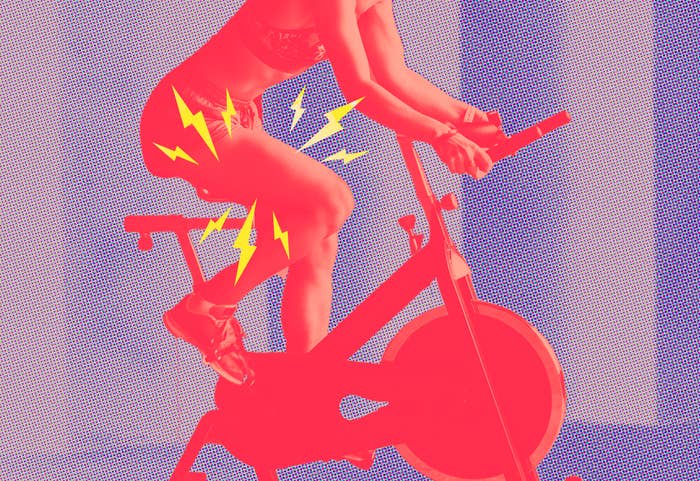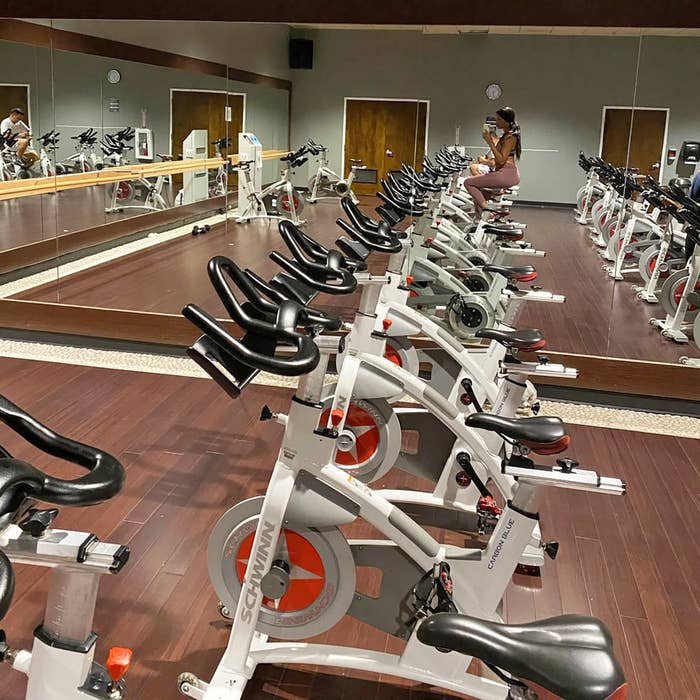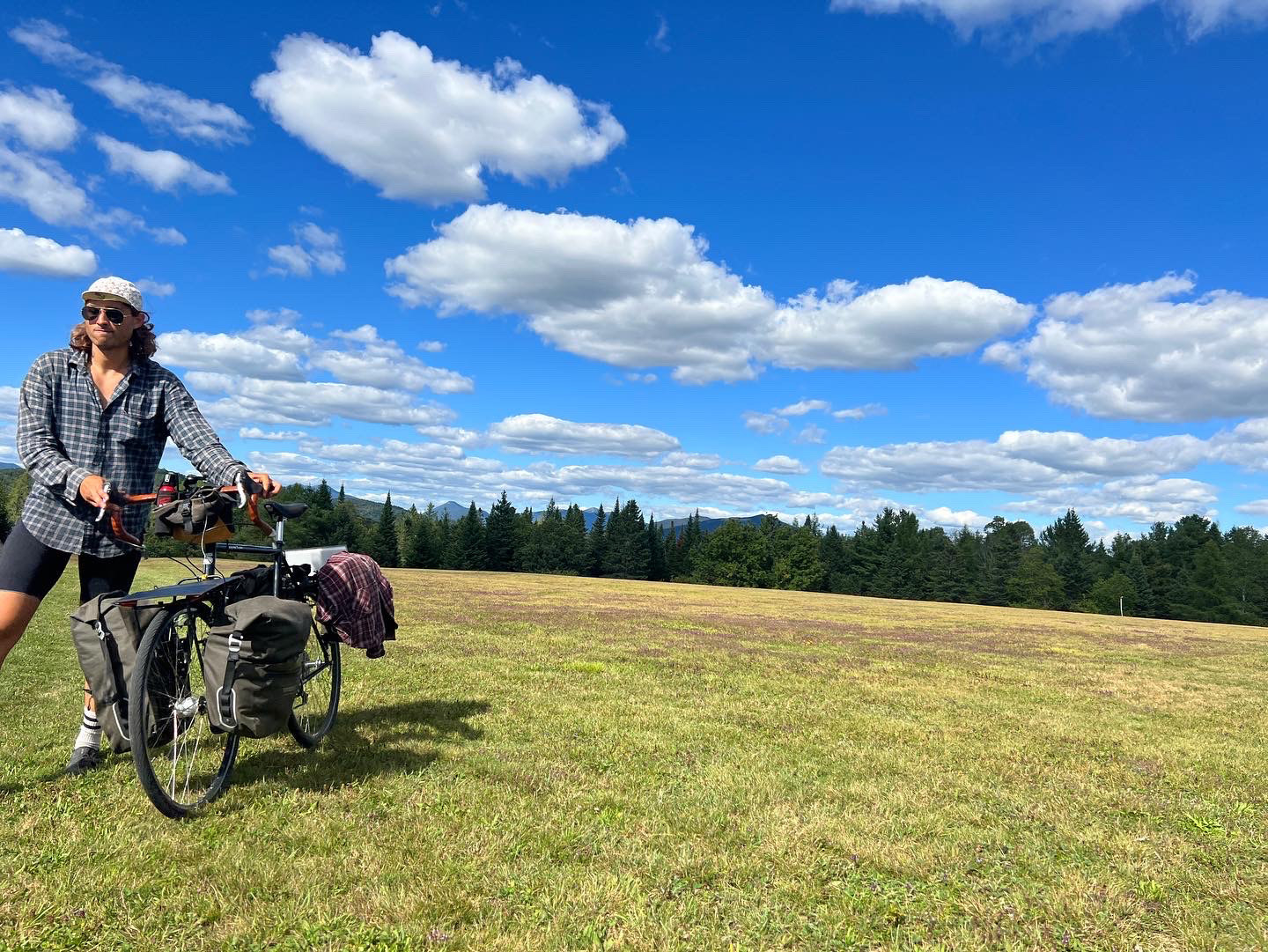
Mary Wilson was eager to end her pandemic couch potato era, so she decided to take her first group spin class in September 2021.
At the time, it seemed like everyone else was doing the same. Indoor cycling, or spinning, experienced a sort of renaissance during the pandemic as the world adapted to remote living. Desperate to move, people bought Pelotons and other stationary bikes for their homes and then flooded spin studios when gyms opened back up.
Wilson could relate. The then-32-year-old recalled arriving at her first class early, setting up in the front row, and chatting with the instructor about her rookie status. The class was tough, Wilson told us, but nothing she felt she couldn’t handle.
Her body felt otherwise.
“I got off that bike and my knees immediately buckled. Everyone was leaving but I had to take my time because I couldn’t even walk,” Wilson said. “I even called my mom just in case I fell and needed help getting to my car.”
For the next two weeks, Wilson could barely stand and nothing helped her feel better. Anti-inflammatory meds, ice, stretching exercises — it all was rendered useless. Then she suddenly noticed her urine was dark brown.

What is rhabdomyolysis?
Much to her surprise, Wilson’s “no pain, no gain” mindset led her to develop what she’s now convinced was rhabdomyolysis — a relatively rare condition that can occur when you overexert your muscles to the point that they break down and release proteins into the bloodstream.
Symptoms include muscle pain, swelling, and weakness, as well as dark-colored urine, a hallmark symptom although not everyone experiences this.
Pain usually manifests immediately after exercise and worsens over the course of three days, at which point most people end up in the hospital. There’s a fine line between rhabdomyolysis (informally known as “rhabdo”) and normal muscle soreness, but experts say your pain levels will most likely indicate something more serious is going on.
The main muscle breakdown products that doctors look for are creatine kinase and myoglobin, the latter of which is filtered by the kidney. In excess, myoglobin spills into urine, giving it that dark, tealike color, which can be mistaken for blood; it’s also the protein responsible for clogging the kidneys and causing kidney injury or failure in the most severe cases.
Rhabdo is treatable mainly via IV hydration, but a delay in care could be life-threatening. Kidney damage, heart arrhythmias, seizures, permanent disability, and death are some complications.
Some people who get rhabdo go on to develop compartment syndrome, a secondary complication where the muscles swell up so much that they become trapped by the connective tissues lining the muscle. (It happened to this 23-year-old whose leg nearly had to be amputated after a spin class.) The syndrome usually feels like severe pain during passive stretching, like bending the knee. Emergency surgery is usually needed to release the pressure.
Although potentially serious for some people, most with rhabdo can safely return to exercise or sports once pain and weakness have resolved.
Wilson never went to the hospital or received an official diagnosis, a decision she said she regrets. In fact, it took her an entire month to recover. But a quick Google search revealed striking similarities between her story and those of dozens of others covered by news outlets and scientific case reports.
The first case of spin-induced rhabdo was reported in 2004.
“Once I fully realized that I literally could have lost my legs or my life, that's when I was like, ‘OK, this is crazy,’” said Wilson, who posted a TikTok of her experience about a year later after coming across several other videos of people sharing similar spin class horror stories.
And it’s not just spinning. Football, CrossFit, weightlifting, and military training — really anything that requires strenuous physical activity, especially in hot environments — are known to cause rhabdo. (Hot temperatures divert blood flow away from vital organs to the skin and muscles, making kidney injury more likely.) That’s why firefighters, police officers, construction workers, and farmers face higher risks of developing the condition.
Rhabdo isn’t just an exercise problem. It can be caused by excessive alcohol consumption; certain diseases such as uncontrolled diabetes and thyroid disorders; different infections like flu, salmonella, and strep; some medications like cholesterol-lowering drugs and antidepressants; recreational drug use; and traumatic injuries from car crashes, falls, and the like. (More than 150 medications and toxins have been linked to rhabdo, including everything from snake and spider bites to cocaine, methamphetamine, and MDMA use.)
It’s unclear how common exercise-induced rhabdo really is because many people, like Wilson, never develop cases serious enough to go to the hospital or aren’t aware that their severe muscle soreness warrants medical attention.
Estimates show that about 26,000 cases occur each year, but that number is likely underreported, according to Dr. Eric Coris, a family and sports medicine doctor and professor at the University of South Florida Morsani College of Medicine.
This is where social media comes in handy.
“This may be one area where social media probably is reporting the more accurate reflection of how often people are getting rhabdo,” Coris said. “They're probably some people that are thinking they have rhabdo and they don't, but I think there are cases out there that we never hear about.”
Why are rhabdo cases linked to spinning?
Truth is, spinning is hard. The American College of Sports Medicine deems it an “intense exercise mode” based on studies that show the levels of cardiovascular fitness needed to get through a 45-minute class.
Some researchers even consider spin-induced rhabdo a public health concern.
Pushing through resistance cycles that stimulate climbing hills, flat roads, or sprints involves the use of some of the largest muscle groups in the body: the quads and glutes. Therefore, pushing these powerful muscles to their max could bring serious consequences.
The problem is that many people underestimate spinning. They hop into classes without prior knowledge of the exercise (or any exercise at all) because they’re attracted to the loud music, strobe lights, and instructors motivating them to go harder and faster.
After all, people don’t just join football or track teams without some degree of prior training.
So it’s not surprising that dozens of case reports show that most riders who develop spin-induced rhabdo, likely dazed by adrenaline, do so after their first class.
“It’s just the classic too soon, too much, too fast,” Coris said.
“You may be used to working out so you think you’re pretty fit, and then you go into class for an hour of an activity that you're not accustomed to at a very high intensity level that’s designed to distract you purposely so you'll tolerate the exercise better — and then you get injured,” Coris said.
A similar increase in rhabdo occurred when CrossFit burst in popularity in the early 2000s, said Neal Pire, an ACSM-certified exercise physiologist based in New Jersey.
“If you’re untrained and your muscles are quote-unquote uneducated in whatever it is that you're doing. you can increase your risk of rhabdo,” Pire said. “The whole idea of starting slow and gradually building up your tolerance applies to anything that pushes you beyond your capabilities, including spinning.
“But it doesn't matter whether it's spinning or not, there's always an amount of exercise that you can tolerate,” Pire said. “Normally you don't know what that is until you do it. You just have to learn what those limits are.”
Rhabdo isn’t limited to people who are unfit or out of shape
One of the biggest misconceptions about rhabdo in general is that only people who are unfit or out of shape can get it.
Professional athletes, marathon runners, and other exercise enthusiasts are all subject to developing the condition if they do more than they can handle — even if it’s something they’ve done hundreds of times.
Adam Janusz is an avid outdoor cyclist. He’s been documenting his journey biking the four corners of the US on social media. (However, it was recently postponed due to winter weather concerns.)

Janusz was riding upwards of 80 miles a day. He started in Chicago, rode to Maine, and then reached Florida in early October when rhabdo struck, the 27-year-old told BuzzFeed News. After about four days of riding nonstop at high mileage and temperatures in the low 90s, Janusz camped on a beach during a sandstorm, hoping to rest after sleeping poorly the previous two nights.
The next morning, Janusz woke up delirious and nauseous. “Rode only 20 miles before calling it quits and getting a hotel. I fell right asleep and when I woke up I was drenched in sweat,” he wrote in an email. “The bed was drenched. My eyes were bloodshot and just walking to the bathroom felt like a 10-mile run. I was sore everywhere.”
The only reason he went to the hospital was because a family member called and alarmed the hotel staff so much that they made him seek medical attention. Janusz was diagnosed with rhabdo and luckily spent only about four hours at the hospital, where he received IV hydration.
When asked what advice he had for others worried about exercise-induced rhabdo, Janusz said: “Listen to your body.”
You can get rhabdo more than once
While it’s uncommon to get exercise-induced rhabdo once, it’s even rarer to get it twice, especially because those affected are better educated about how to prevent it from happening again.
There are some conditions of the muscles like McArdle disease that may give people “an innate congenital tendency towards rhabdo,” Coris said. It’s a genetic disorder that prevents muscles from breaking down a complex sugar called glycogen. Symptoms like muscle cramps, fatigue, and weakness tend to appear during exercise.
Generally, people who have a history of rhabdo should be careful when engaging in any new exercises or increasing the intensity of workouts they’re used to, Coris said.

And that’s exactly what 23-year-old Jamie Bornscheuer thought she was doing after she was diagnosed with rhabdo the first time in August 2021. The culprit? A couple of crunches and a plank.
But she went on to develop the condition three more times in a span of six months. Then after avoiding exercise and resting for over a year, she landed in the hospital with rhabdo for the fifth time just last week after a long walk in New York City.
Bornscheuer’s initial case was so unusual that her doctor published a report on it because her main symptom — abdominal swelling, which appeared with each subsequent diagnosis — isn’t a common sign of rhabdo.
To this day, Bornscheuer doesn’t have any answers. Perhaps most frustrating of all is that the best advice she’s been given is to not exercise, “which of course I can’t accept,” she said.
“Nobody seems to really know what’s going on and I've been tested for everything under the sun,” Bornscheuer told BuzzFeed News. “I'm negative for everything so nobody can explain to me why I’m having recurring episodes.
“I'm now realizing that this is a debilitating part of my life. I cannot work out. I can't do anything,” she continued. “I'm starting to come to terms with the fact that my body is not healthy in the way that it used to be and that I have zero answers about it.”
How you can avoid exercise-induced rhabdo
The odds that you’ll develop rhabdo from exercise, whether you’re new to it or not, vary widely depending on your health status, the type of workout involved, the intensity of your workout, the environment it’s done in, etc. So there’s unfortunately no rubric or tolerance level to abide by to avoid the condition.
That said, it’s important to follow the general principles of exercise, Pire said: a proper warmup before your main workout, a cooldown afterward, and any other stretches or range-of-motion rehab exercises you may need.
Hydration before, during, and after physical activity is absolutely essential. “That’s going to allow you to filter through the muscle breakdown products better and let your kidneys have more blood flow, which is going to protect them from injury,” Coris said. “Slow, steady increases in your physical activity are the safest way to take on any exercise routine to prevent injury.”
Otherwise, proper preconditioning is key when it comes to trying new types of activity, especially spinning.
“Before you take an intense spin class, spend a few weeks building up your cardiovascular and muscular endurance on a stationary bike or your regular bicycle,” Coris said.
You’ll also want to get accustomed to what the seats and foot pedals feel like, Pire said. When you feel prepared enough to take a class, don’t forget to tell the instructor you’re new to spinning. That way they can keep an eye on you.
Dim lighting, loud music, and encouraging instructors are great ways to increase motivation around exercise, but try not to let the adrenaline take over too much, experts say. Check in with yourself every once in a while and see how your body feels. Too much? Feel free to hop out of class until you’ve recovered enough to keep going, if you can.
Some other tips to avoid rhabdo from exercise:
- Avoid massage guns when experiencing intense soreness because they may injure your muscles even more.
- Allow a few days in between intense workouts to give your body time to rest.
- Avoid supplements like creatine and caffeine before exercise.
More generally, seek out safe gym environments. Is your spin studio a comfortable temperature?
You could also benefit from letting your doctor know if you plan on trying a spin class or any other exercise for the first time, particularly if you’re older, have certain medical conditions like heart disease, are taking medications, or live a more sedentary lifestyle — just to assure yourself you aren’t putting your body under unnecessary stress and risk.
“Your body is capable of adapting to very high levels of exercise,” Coris said. “You just have to do it slowly and carefully. It doesn’t happen overnight.”
